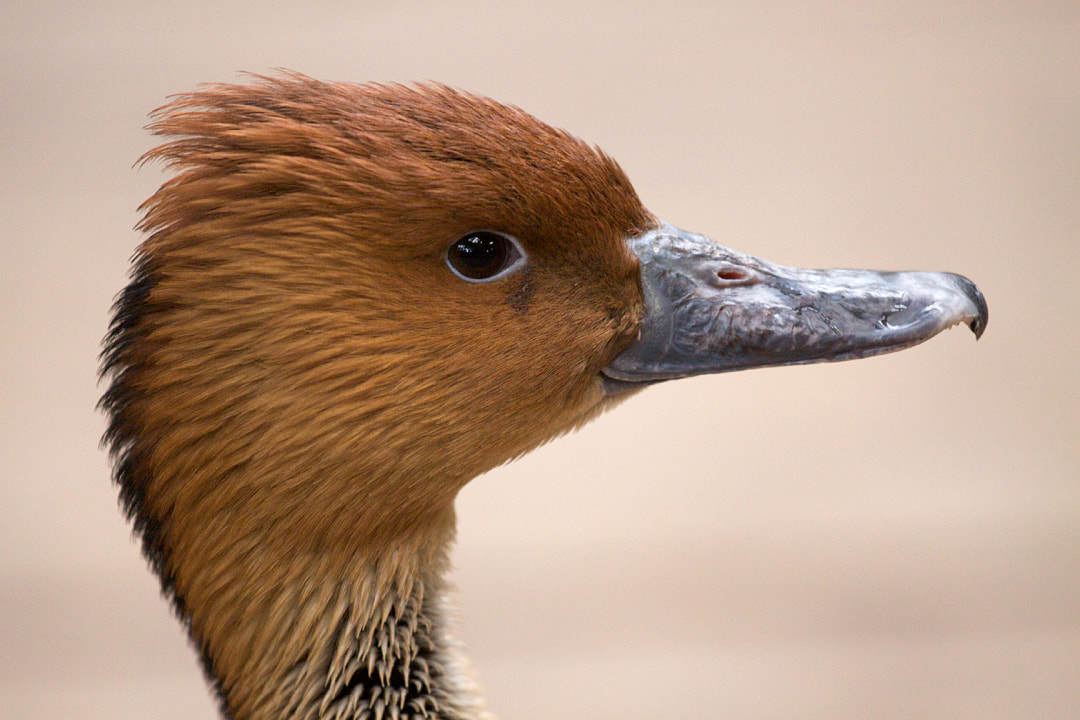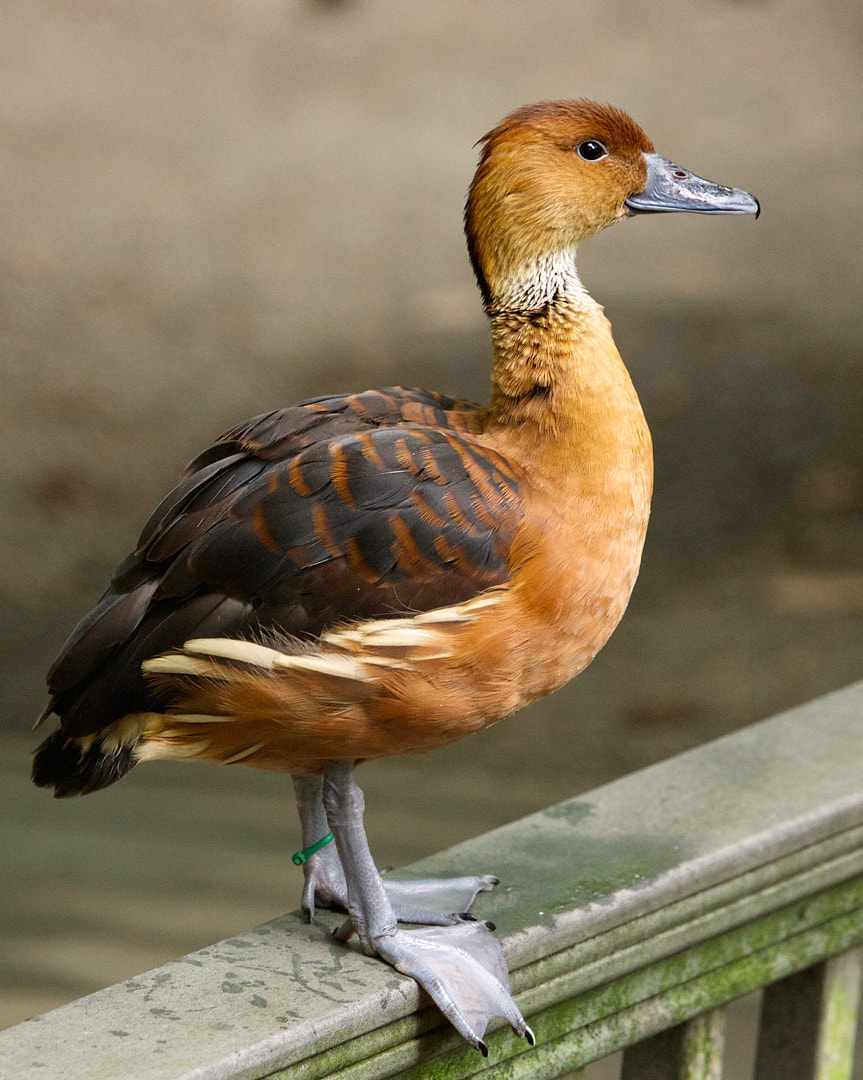Fulvous Whistling Duck (Dendrocygna bicolor)
|
Habitat: They live near ponds, marshes, and wet agricultural areas.
Range: They are typically found in the southern United States of America, Mexico, southeast South America, east Africa and India. Occasionally, they can be found on the northeast coast of the United States of America, in Nova Scotia, and in the midwestern plain states of the United States of America. Diet: Fulvous Whistling-ducks eat seeds, fruits, and grains, with insects and small aquatic invertebrates sometimes included. They often flock in large numbers to rice paddies to feed. Lifespan: They are estimated to live up to 10 years2. Social Structure: Fulvous Whistling-ducks will make a nest of reeds lined with grasses on the ground. They will hid it in dense vegetation or a grass hummock. Females will lay a clutch of 12-14 eggs once a year that both parents will incubate for 24-26 days. The young will fledge at 55-63 days, with parents offering care, though the young will feed on their own. Status: Least Concern1 Other: The Fulvous Whistling-duck is named for its tawny color and high-pitched, two-note call. It is most active during the night and can often be seen flying in flocks at dawn and dusk. 1 https://www.iucnredlist.org/species/22679746/92827620 2 https://www.saczoo.org/fulvous-whistling-duck |
Physical Description: The Fulvous Whistling-duck has a tan ventral side (stomache) with white stripes on their flanks and a dark back with chestnut stripes. They have a gray bill and blue-gray legs and feet. They grow 18-21 inches long with a 3-foot wingspan, and weigh 1 ½ to 1 ¾ pounds.
|
Rainforest Building open daily from 10:30 am to 3:30 pm








